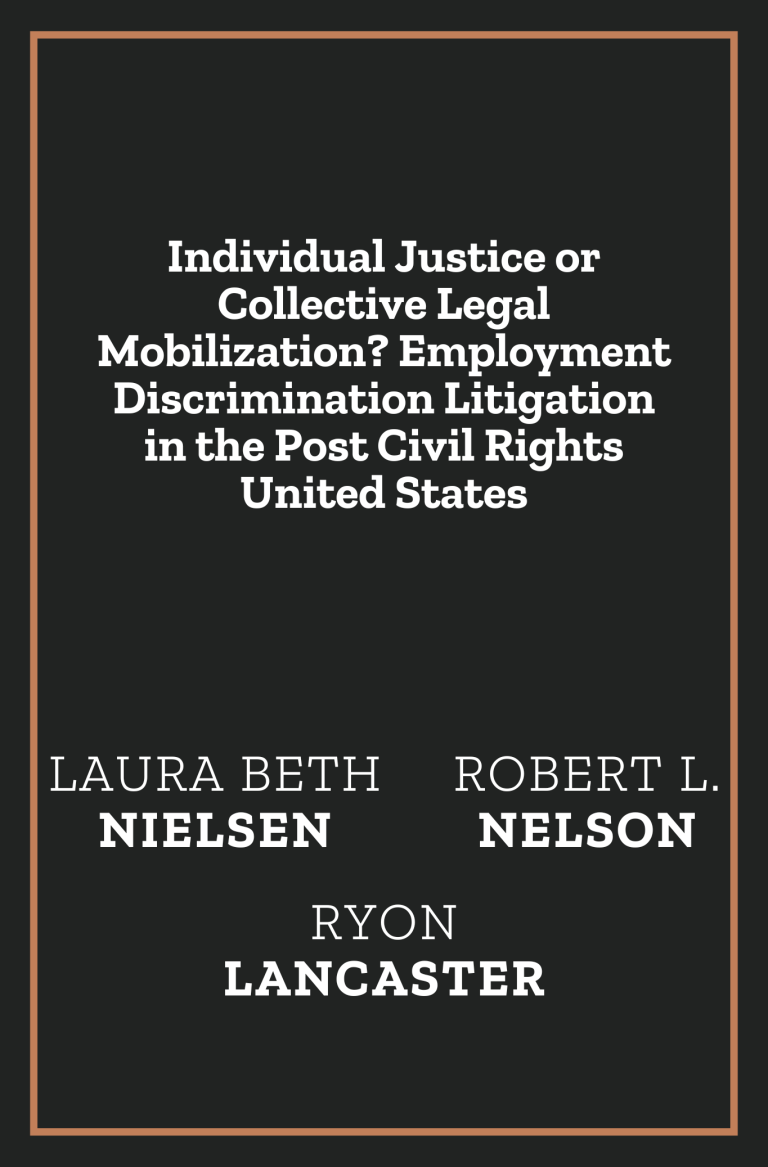From the Journal of Empirical Legal Studies
This article analyzes the outcomes of employment discrimination lawsuits filed in federal court from 1988 to 2003. It goes beyond previous research by examining case filings rather than published opinions and by treating case outcome as a sequential variable. Our analysis is informed by four theoretical models: formal legal, rational action/economic, legal mobilization, and critical realist. We employ a discrete-time event-history model with random effects to estimate whether a case will end at a particular stage. We find that employment discrimination litigation consists overwhelmingly of individual cases, a majority of which end in a small settlement. The outcomes of cases are difficult to predict at the outset of litigation. Legal representation and collective legal mobilization have powerful effects on outcome, but collective legal mobilization is rare. These results are most consistent with the critical realist perspective. Our analysis suggests that employment discrimination litigation maintains law’s jurisdiction over claims of workplace discrimination while not providing a significant remedy or an authoritative resolution in most cases.

